One plus one often equals much more than two—and that’s especially true in the garden. A full-blooming flower on its own is a sight to behold, but surrounding it with contrasting blooms is where gardening meets artistry. In a sense, gardening is all about creating stellar flower combinations that elevate one another. Here are a few to get you started!
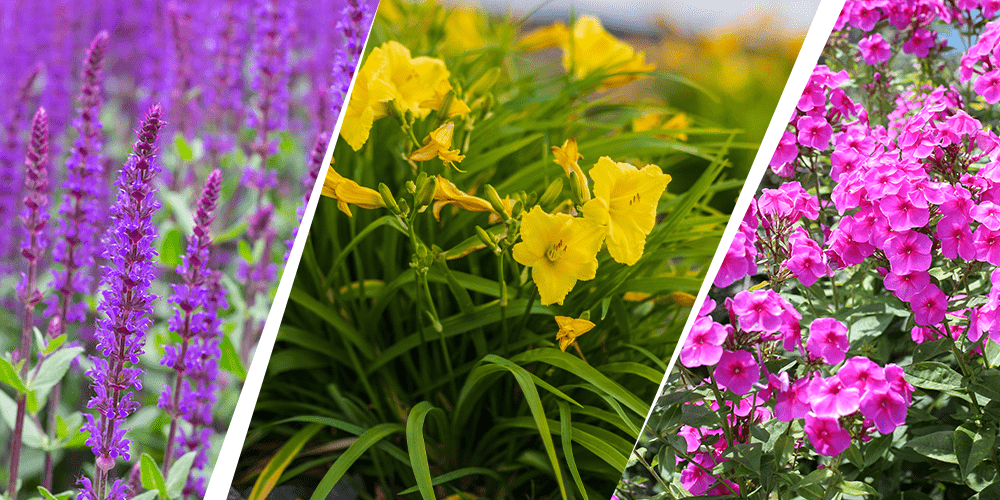 Salvia – Daylily – Garden Phlox
Salvia – Daylily – Garden Phlox
Salvia is the first of this trio to open its flowers. The indigo towers bloom in late spring, and if you cut them back, they continue flowering all the way until fall. They’re soon joined by the beautiful contrast of daylilies, which unfurl a barrage of yellow or orange flowers from late spring to early summer. The glowing pink petals of garden phlox join the mix by midsummer.
These complimentary flower shapes and colors are sure to make a stellar portrait in the garden. All of them prefer full sun and well-drained soil.
 Catmint – Tickseed – Blazing Star
Catmint – Tickseed – Blazing Star
Here’s a combination to take the spotlight in the middle of the growing season! It begins with the light blue glow of catmint, along with its soothing fragrance, in late spring. From June to September, tickseed unfurls a cloud of bright yellow flowers above the finely textured leaves. By midsummer, blazing star displays impressive wands of frizzy lavender petals.
The combination of heights and colors brings a splendid contrast to the perennial garden during the hottest months. These plants prefer full sun to part shade and average moisture.
 Echinacea – Goldenrod – New England Aster
Echinacea – Goldenrod – New England Aster
This triad of flowers brings music to the garden in late summer and fall. The fluorescent purple or white petals of echinacea start blooming in midsummer. They carry on their tune right into the fall when they’re joined by the sunset yellows of goldenrod. New England aster joins the chorus around the same time—late August or early September—with the star-like violet petals.
These late-season bloomers provide a banquet for the senses, as well as the pollinators. They all thrive in full sun or part shade and well-draining soil.
 Ligularia – Swamp Milkweed – Great Blue Lobelia
Ligularia – Swamp Milkweed – Great Blue Lobelia
Here’s a combination to take advantage of any wet conditions in the garden. Ligularia’s vibrant yellow or orange blooms and mound of dramatic foliage set the scene with a cheerful backdrop. Then comes the swamp milkweed with its clouds of pink petals, which butterflies adore. Meanwhile, the great blue lobelia unfurls towers of ethereal blue petals above leafy stems throughout the summer.
This stellar combination thrives in wet meadows, moist soils, or at the edge of ponds. They’re also great candidates for a rain garden.
 Hosta – White Wood Aster – Fern
Hosta – White Wood Aster – Fern
Here’s a team of perennials to bring beauty to the shade garden. Hostas offer lush green or variegated green leaves and subtle pink or white flowers that open sometime during the summer, depending on the variety. The white wood aster, like other asters, saves its beautiful white blooms for the fall. Meanwhile, ferns anchor the space with graceful green fronds that freshen the air throughout the growing season.
If you were ever wondering what to do with a shady area, this is a great combination to try. Ferns like evenly moist soil, while the hosta and white wood aster are adaptable to many soil types.
 How to Create Your Own Flower Combinations
How to Create Your Own Flower Combinations
If you’re feeling creative, try experimenting with your own perennial combinations. Look for beautiful color contrasts, varied leaf textures, and differing flower shapes. Keep in mind that combining plants with similar light, soil, and moisture needs will give your garden the best opportunity to thrive.
For more inspiration on stellar garden flower combinations, visit our garden center in Moultonborough, and follow us on Facebook or Instagram!


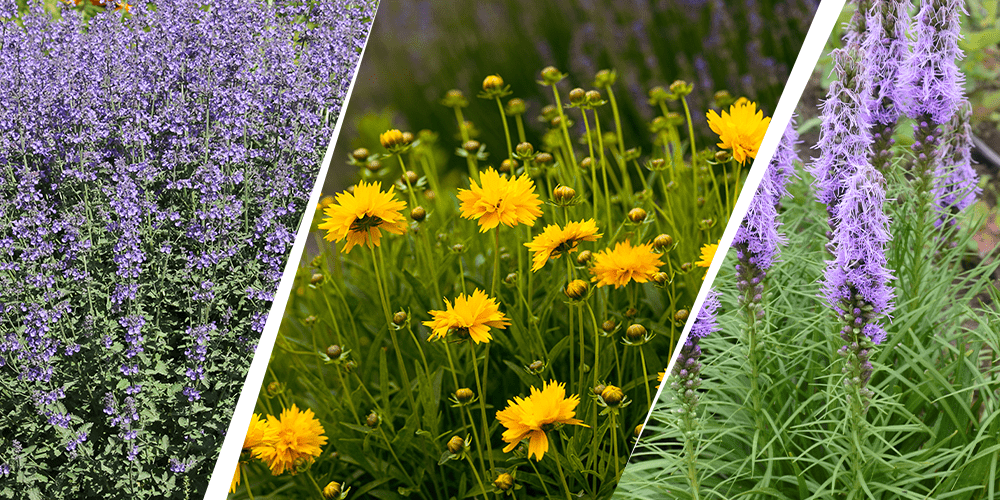 Catmint – Tickseed – Blazing Star
Catmint – Tickseed – Blazing Star 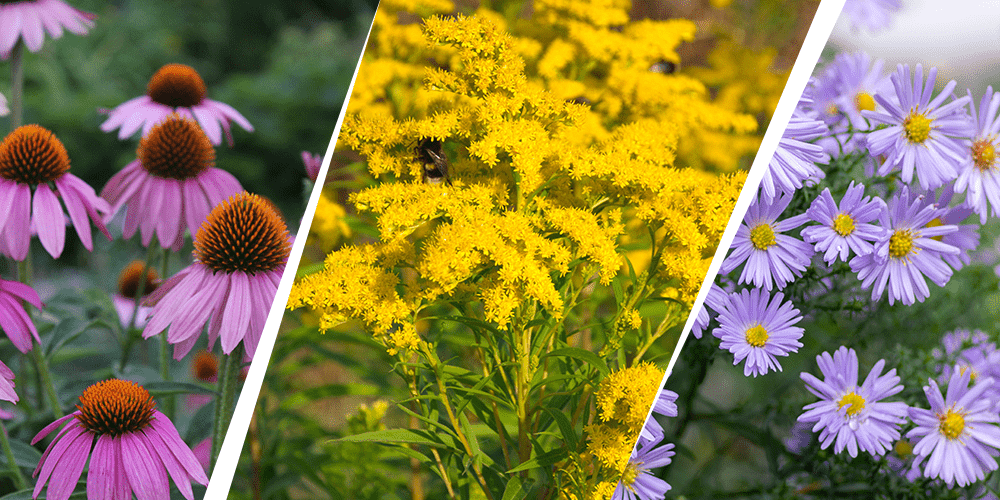 Echinacea – Goldenrod – New England Aster
Echinacea – Goldenrod – New England Aster 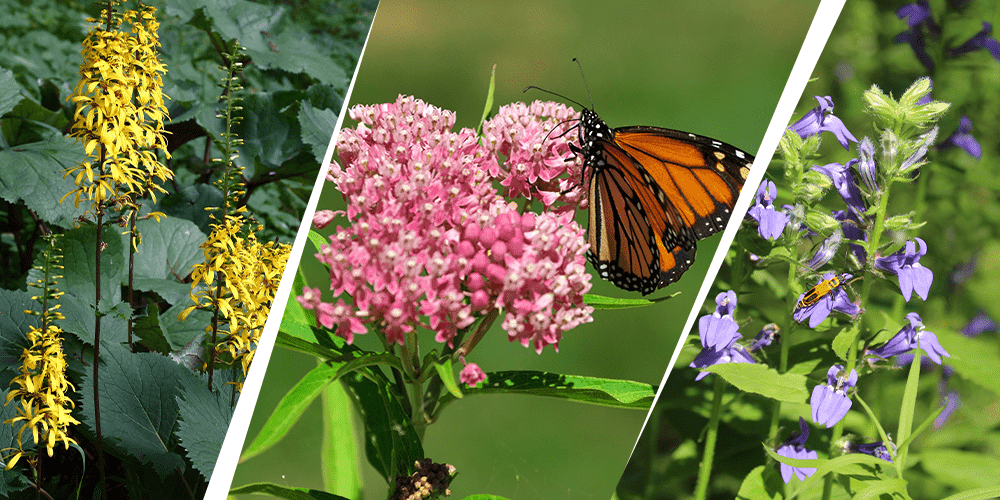 Ligularia – Swamp Milkweed – Great Blue Lobelia
Ligularia – Swamp Milkweed – Great Blue Lobelia 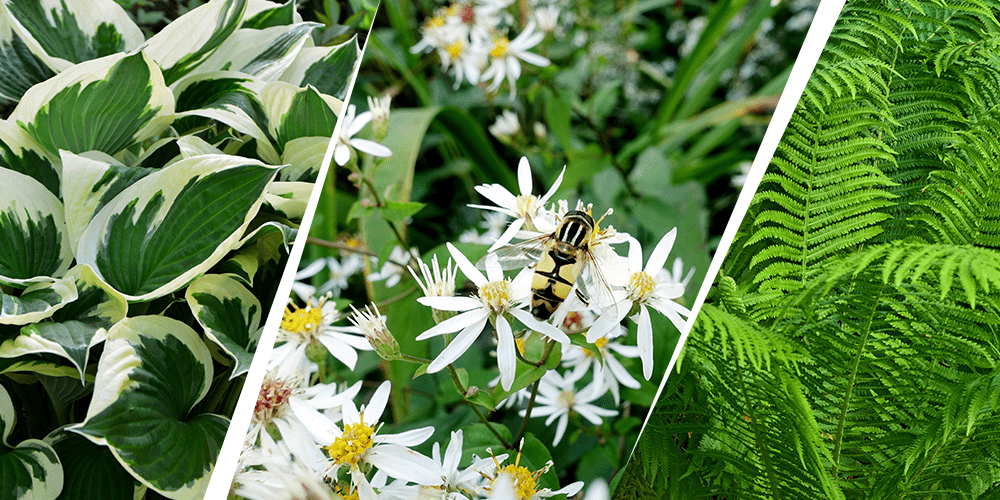 Hosta – White Wood Aster – Fern
Hosta – White Wood Aster – Fern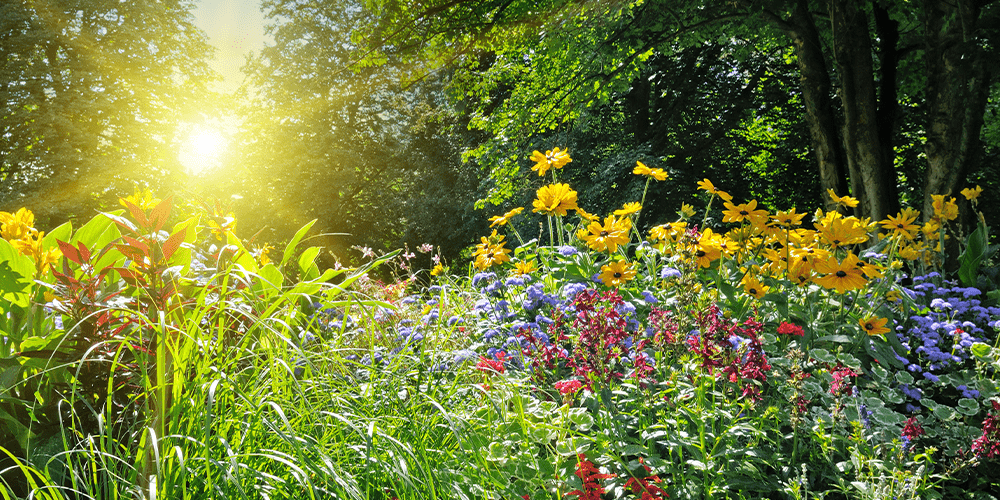 How to Create Your Own Flower Combinations
How to Create Your Own Flower Combinations